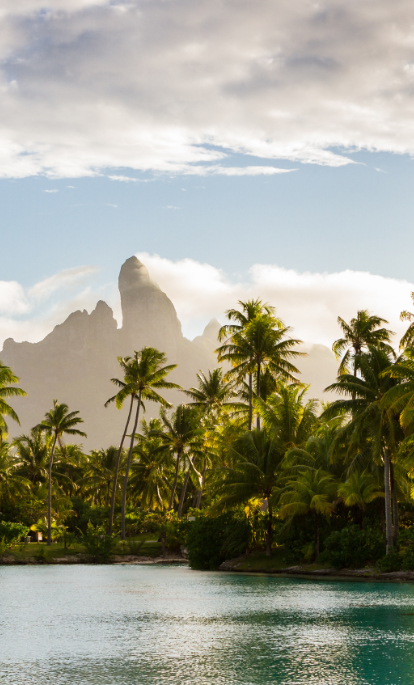Embrace the laid-back island culture of French Polynesia, with sweeping views of lush mountain peaks, bordered by phosphorescent turquoise lagoons and palm tree fringed beaches. With more than a hundred islands in the South Pacific stretching off into the horizon, it’s easy to see why so many find themselves drawn to the white (and black) sanded shores of this slice of paradise. Bearing in mind that the country’s location in the southern hemisphere means seasons are flipped on their head, read on for our guide on when’s the best time to visit French Polynesia.
Autumn
For those looking to escape the tourist hordes of the peak season (aka winter) travelling during the island's autumn months of March, April and May could be just the ticket. The slower pace of life is matched with the quieter feeling found throughout the island, where seclusion and serenity are paramount. As for the weather, it stays at a comfortable average of around 25°C, with the occasional tropical shower or two thrown in for good measure. Thankfully these showers don’t last for very long, with the sun making an appearance in between. But they do increase in their frequency as the season progresses. This is the best time to visit French Polynesia for those looking to surf and hike their way across the islands in reasonable conditions.
Winter
When it comes to finding the best time to visit French Polynesia, the islands’ winter is certainly the season to do it. We’re talking warm temperatures (that aren’t too toasty), rainfall that’s infrequent and a cool ocean for all your scuba and snorkelling needs. The weather is at its best during June, July and August where you’ll experience the sunniest days. But with great sun, come greater crowds so be aware that you’ll likely be joined by other sun-baskers and warm weather lovers.
Spring
We’ve hyped up the winter season, but it’s actually September that’s considered the best time to visit French Polynesia by many, thanks to it being the driest month with the least amount of expected rainfall. Not to mention longer daylight hours, which means more time for exploring. But be warned that larger crowds can also be found throughout this time.
Summer
The heat’s rising and so is the humidity, with temperatures exceeding 30°C, but that shouldn’t deter travellers. You can still enjoy a blissful island holiday throughout December, January and February. Those able to handle the hotter temperatures can escape the heat with air-conditioned accommodation and enjoy the lack of tropical storms. The islands will also be quieter in terms of crowds but that (and the heat) hasn’t halted the festivities, music, dancing and Chinese New Year celebrations during this time.














